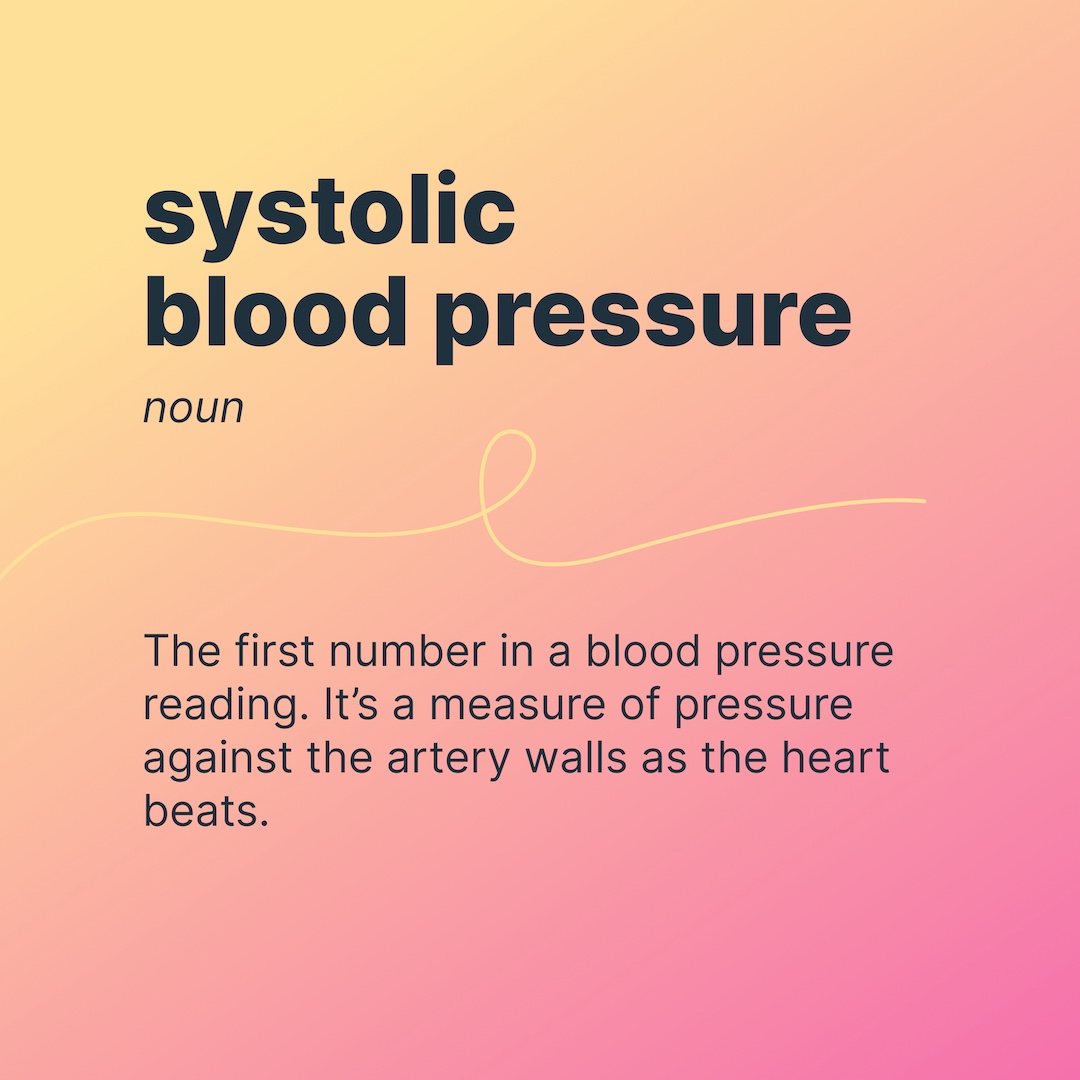What Is Systolic Blood Pressure?

A blood pressure reading consists of two numbers. The first is systolic blood pressure.
Systolic blood pressure is a measure of the force of your blood against the artery walls as your heart beats. (The second number, diastolic blood pressure, measures the pressure against the artery walls when your heart rests between beats.)
Blood pressure is measured in units called millimeters of mercury (mm Hg). Doctors may diagnose high blood pressure (hypertension) if your systolic blood pressure is 130 mm Hg or higher. A normal systolic blood pressure is less than 120 mm Hg.
Want to Read More?
Access all of Dario Connect’s content, community, and experts for free!
Already a member? Login
Want to Read More?
Access all of Dario Connect’s content, community, and experts for free!
sign UP For FreeAlready a member? Login

